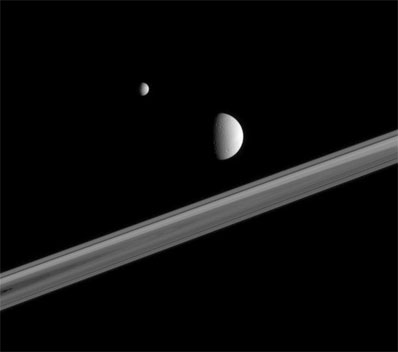
Spaceflight Now +

|

|

|

|

Premium video content for our Spaceflight Now Plus subscribers.

Launch of New Horizons
 The New Horizons spacecraft begins a voyage across the solar system to explore Pluto and beyond with its successful launch January 19 aboard a Lockheed Martin Atlas 5 rocket from Cape Canaveral, Florida. The New Horizons spacecraft begins a voyage across the solar system to explore Pluto and beyond with its successful launch January 19 aboard a Lockheed Martin Atlas 5 rocket from Cape Canaveral, Florida.

 Full coverage Full coverage

Stardust comes home
 NASA's Stardust spacecraft returns samples of cometary dust to Earth with its safe landing in Utah on January 15. NASA's Stardust spacecraft returns samples of cometary dust to Earth with its safe landing in Utah on January 15.

 Full coverage Full coverage

NASA administrator
 NASA Administrator Mike Griffin and his deputy Shana Dale hold a news conference at Kennedy Space Center in the final hours of the countdown to the New Horizons launch. Questions from reporters ranged from the Pluto-bound mission, the agency's budget and the space shuttle program. NASA Administrator Mike Griffin and his deputy Shana Dale hold a news conference at Kennedy Space Center in the final hours of the countdown to the New Horizons launch. Questions from reporters ranged from the Pluto-bound mission, the agency's budget and the space shuttle program.

 Dialup | Broadband | iPod Dialup | Broadband | iPod

First satellite repair
 The mission for the crew of space shuttle Challenger's April 1984 flight was two-fold -- deploy the experiment-laden Long Duration Exposure Facility (LDEF) and then track down the crippled Solar Max spacecraft, capture it and perform repairs during spacewalks. Initial attempts by the astronauts to grab the craft while wearing the Manned Maneuvering Unit spacewalk backpacks failed, but the crew ultimately retrieved Solar Max and installed fresh equipment while it was anchored in the payload bay. The crew narrates this post-flight presentation of home movies and highlights from mission STS-41C. The mission for the crew of space shuttle Challenger's April 1984 flight was two-fold -- deploy the experiment-laden Long Duration Exposure Facility (LDEF) and then track down the crippled Solar Max spacecraft, capture it and perform repairs during spacewalks. Initial attempts by the astronauts to grab the craft while wearing the Manned Maneuvering Unit spacewalk backpacks failed, but the crew ultimately retrieved Solar Max and installed fresh equipment while it was anchored in the payload bay. The crew narrates this post-flight presentation of home movies and highlights from mission STS-41C.

 Small | Medium | Large Small | Medium | Large

STS-26: Back in space
 The space shuttle program was grounded for 32 months in the painful wake of the 1986 Challenger accident. Americans finally returned to space in September 1988 when shuttle Discovery safely launched for its mission to deploy a NASA communications satellite. Enjoy this post-flight presentation narrated by the astronauts as they show movies and tell the story of the STS-26 mission. The space shuttle program was grounded for 32 months in the painful wake of the 1986 Challenger accident. Americans finally returned to space in September 1988 when shuttle Discovery safely launched for its mission to deploy a NASA communications satellite. Enjoy this post-flight presentation narrated by the astronauts as they show movies and tell the story of the STS-26 mission.

 Small | Medium | Large Small | Medium | Large

 Become a subscriber Become a subscriber
 More video More video

|

|

|

|
|

|

Moons in perspective
CASSINI PHOTO RELEASE
Posted: January 23, 2006

Credit: NASA/JPL/Space Science Institute
Download larger image version here
|
Two of Saturn's battered, icy companions hover here, above the ringplane.
To get a sense of the three-dimensional nature of the scene, note that the wide band of visible rings is in between the two moons in this view from the Cassini spacecraft. Mimas (397 kilometers, or 247 miles across, at left) is outside the far side of the rings. Dione (1,126 kilometers, or 700 miles across) is outside the rings and closest to Cassini.
The view is from just beneath the ringplane.
The image was taken in visible light with the Cassini spacecraft narrow-angle camera at a distance of approximately 2.2 million kilometers (1.4 million miles) from Dione and 2.7 million kilometers (1.7 million miles) from Mimas. The image scale is 13 kilometers (8 miles) per pixel on Dione and 16 kilometers (10 miles) per pixel on Mimas.
The Cassini-Huygens mission is a cooperative project of NASA, the European Space Agency and the Italian Space Agency. The Jet Propulsion Laboratory, a division of the California Institute of Technology in Pasadena, manages the mission for NASA's Science Mission Directorate, Washington, D.C. The Cassini orbiter and its two onboard cameras were designed, developed and assembled at JPL. The imaging operations center is based at the Space Science Institute in Boulder, Colo.
|

|

|

|

|



